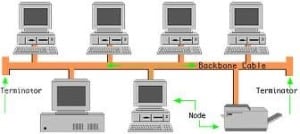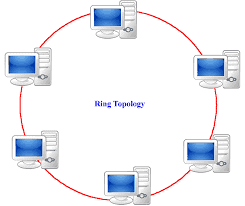[bs_icon name=”glyphicon glyphicon-chevron-right”] Introduction To Network
- Peer-to-peer networks
- Client/server networks
- Bus Topology
- Star Topology
- Ring Topology
- Mesh Topology
- Wireless Topology
- VLAN – Virtual Local Area Networks
We have Two kind of Network Model :
[bs_icon name=”glyphicon glyphicon-chevron-right”] Peer to Peer [bs_icon name=”glyphicon glyphicon-chevron-right”] Client / Server
- Peer-to-peer networks are useful for only relatively small networks. They are often used in small offices or home environments. Less than 10 PC –In Here we do not have centralized administration; and each person is responsible for his own backup.

- Client/server networks, also called server-centric networks, have clients and servers. Servers provide centralized administration, data storage, and security. The client system requests data from the server and displays the data to the end user
Topology – is the arrangement of the how device are layout in network
We have several Topologies :
- Bus Topology
- Star Topology
- Ring Topology
- Mesh Topology
- Wireless Topology
Bus –This topology is an old one and essentially has each of the computers on the network daisy-chained to each other. Packets must pass through all computers on the bus. This type is cheap, and simple to set up, but causes excess network traffic, a failure may affect many users, and problems are difficult to troubleshoot.
The bus network topology is also known as a linear bus because the computers in such a network are linked together using a single cable called a trunk, or backbone.The use the terminator at end of each coaxial cables; and if the terminator is loose ; you will not be able to talk to other PC, it is Old technology
Star – The star topology uses twisted pair (10baseT or 100baseT) cabling and requires that all devices are connected to a hub. Advantages are centralized monitoring, and failures do not affect others unless it is the hub, easy to modify. The disadvantage is that the hub is a single point of failure. If it goes down, there are no communications possible.
Ring – A ring topology has a physical and logical ring and is used on SONET and FDDI networks (note that Token Ring networks are actually a hybrid star ring topology). Any station can send a packet around the ring but only the station with the token can do so. The token is passed around the ring giving all stations an opportunity to communicate. This is a very fast and simple network. However if any part of the ring goes down, the entire LAN goes down. If there is a problem at a station, it may be difficult to locate it. Ring networks are not very common.
Mesh –In a true mesh topology every node has a connection to every other node in the network. A full mesh provides redundancy in case of a failure between links, but is impractical due the complexity and the expensive amount of cabling required.
Wireless Topology – In Wireless Topology we have two format :
- Adhoc model
- Infrastructure model
In Adhoc Model there is no AP=Access Point; just two devoices are connected via Adhoc .
In infrastructure model we have a more than 2 Wireless device ( like laptop) that will talk to other laptop via AP access point . In order talk to each other ; they must use the same SSID .
Source by wikipedia
To Become Cretified For CompTIA Network+ Please Visit This Link ;
Also published on Medium.











